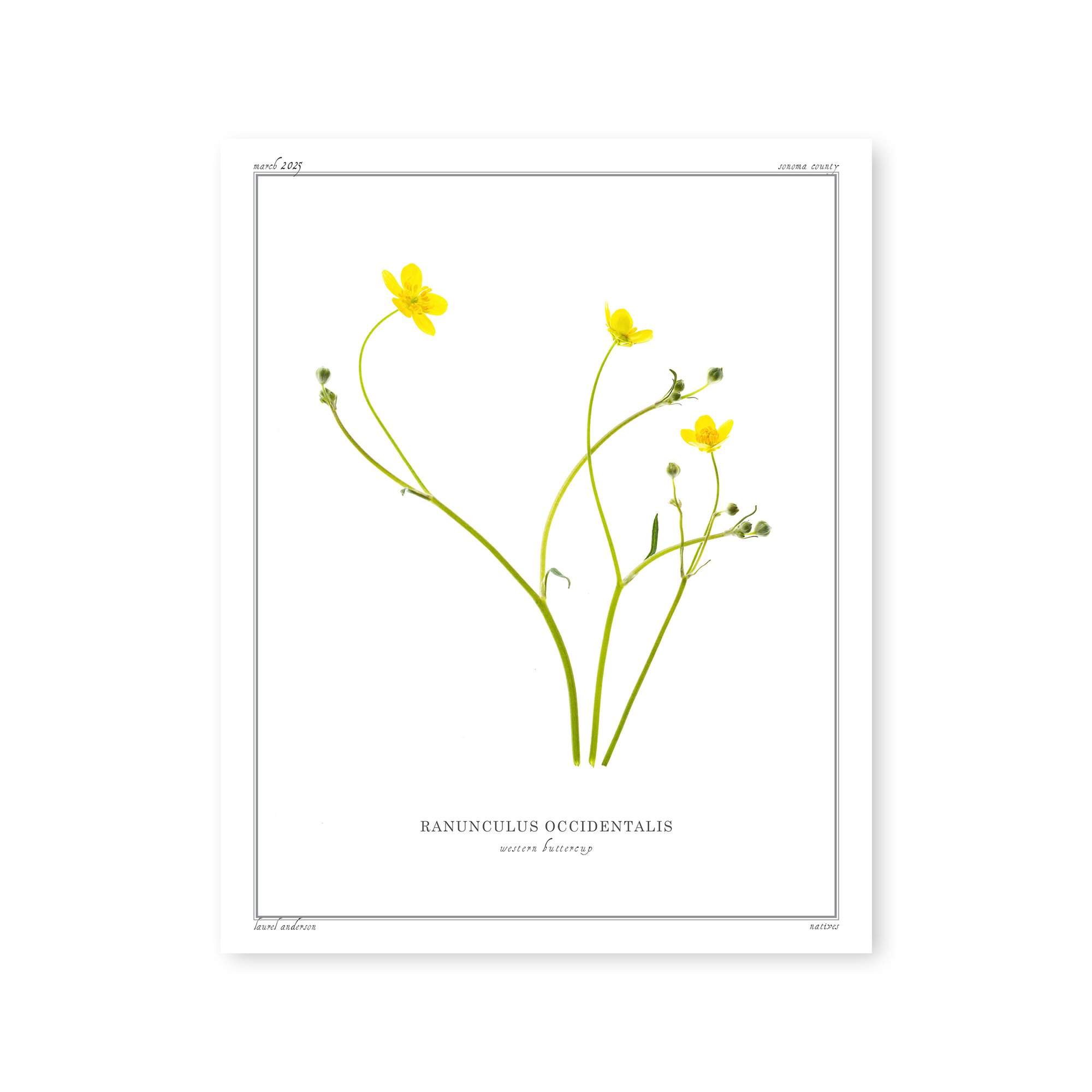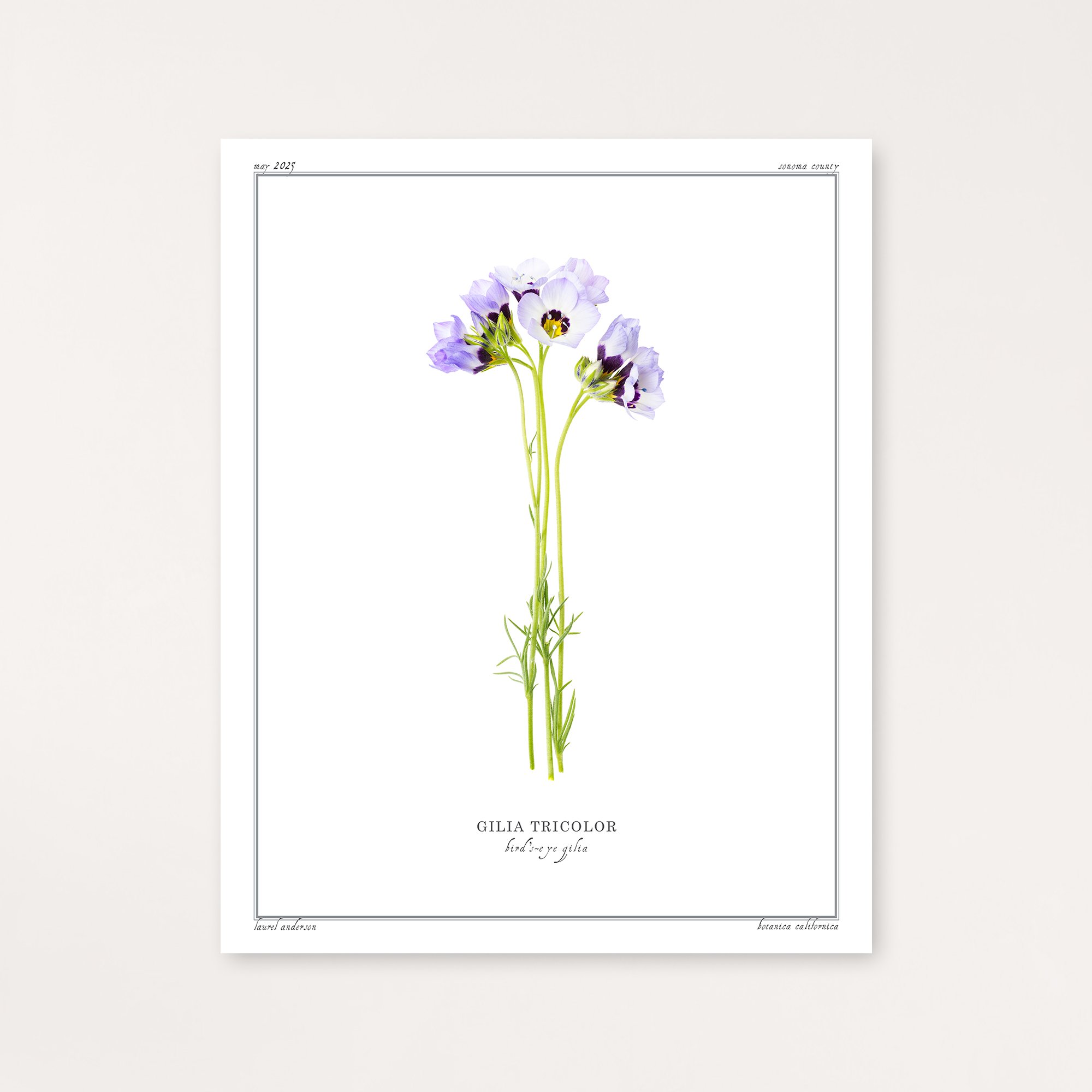 Image 1 of 2
Image 1 of 2

 Image 2 of 2
Image 2 of 2



Lacy Phacelia
Lacy Phacelia, Phacelia tanacetifolia, grows throughout much of California's open flats and slopes below 4,000 feet. This robust annual can reach up to 3 feet tall, with deeply divided, lacy leaves that give the plant its distinctive feathery appearance.
As one of the most valuable pollinator plants in California, Lacy Phacelia attracts an exceptional diversity of beneficial insects with its long, coiling clusters of lavender-blue, bell-shaped flowers that open in sequence, providing nectar throughout an extended blooming period. The genus Phacelia is known to attract large numbers of native bees including yellow-faced bees, miner bees, and mason bees.
Each print is made by the artist using archival quality pigment ink on Moab's Entrada Rag Bright 300 paper.
Lacy Phacelia, Phacelia tanacetifolia, grows throughout much of California's open flats and slopes below 4,000 feet. This robust annual can reach up to 3 feet tall, with deeply divided, lacy leaves that give the plant its distinctive feathery appearance.
As one of the most valuable pollinator plants in California, Lacy Phacelia attracts an exceptional diversity of beneficial insects with its long, coiling clusters of lavender-blue, bell-shaped flowers that open in sequence, providing nectar throughout an extended blooming period. The genus Phacelia is known to attract large numbers of native bees including yellow-faced bees, miner bees, and mason bees.
Each print is made by the artist using archival quality pigment ink on Moab's Entrada Rag Bright 300 paper.



















